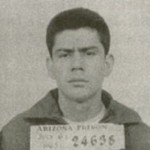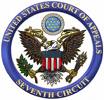The New Miranda Warning
 I never thought the Miranda warning was all that useful. In fact, it actually raises more questions than it answers. For example, the warning tells a suspect that anything he says can be used against him in court. But asking for an attorney is saying something, isn’t it? Could the prosecutor later use such a request against him? (After all, television teaches us that only guilty people “lawyer-up.”) And what if the suspect wants to remain silent? Could his silence be used against him in court? The Miranda warning fails to answer these and many other questions.
I never thought the Miranda warning was all that useful. In fact, it actually raises more questions than it answers. For example, the warning tells a suspect that anything he says can be used against him in court. But asking for an attorney is saying something, isn’t it? Could the prosecutor later use such a request against him? (After all, television teaches us that only guilty people “lawyer-up.”) And what if the suspect wants to remain silent? Could his silence be used against him in court? The Miranda warning fails to answer these and many other questions.
Making matters even worse for the would-be defendant is Berghuis v. Thompkins, 130 S. Ct. 2250 (2010). In a confidence inspiring 5-4 split, the Court ruled that a suspect cannot actually exercise the right to remain silent by remaining silent—even if that silence lasts through nearly three hours of interrogation.
In response to all of this chaos, I’ve drafted a new and improved Miranda warning.


 Congratulations to the students in Appellate Writing and Advocacy, who are turning in their final briefs today. This moment is a good one to reprint an article that Emily Lonergan, the Chief Justice of the Moot Court Board, wrote for the most recent De Novo newsletter. De Novo is the publication of the State Bar of Wisconsin’s Appellate Practice Section. The Appellate Practice Section is active, and De Novo is a good source for news, information, and tips about appellate practice. This article is reprinted with permission.
Congratulations to the students in Appellate Writing and Advocacy, who are turning in their final briefs today. This moment is a good one to reprint an article that Emily Lonergan, the Chief Justice of the Moot Court Board, wrote for the most recent De Novo newsletter. De Novo is the publication of the State Bar of Wisconsin’s Appellate Practice Section. The Appellate Practice Section is active, and De Novo is a good source for news, information, and tips about appellate practice. This article is reprinted with permission.